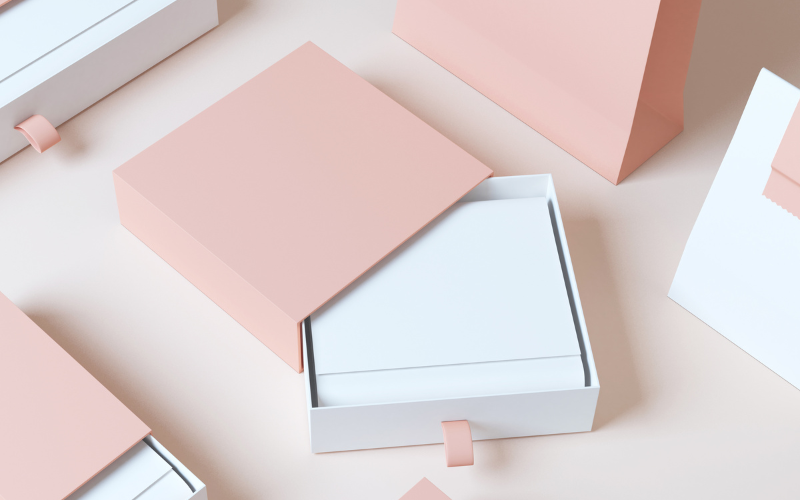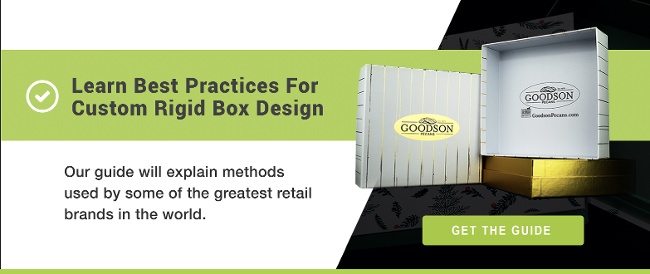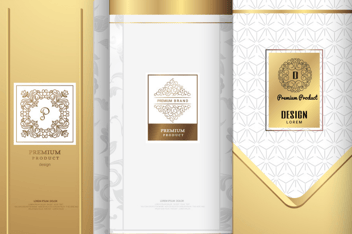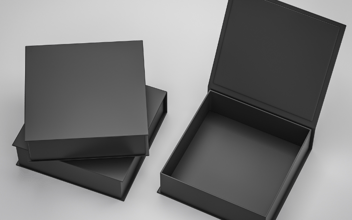What Are Minimum Order Quantities for Luxury Gift Boxes?
When it comes to packaging your products or gifts, luxury gift boxes offer a touch of sophistication and elegance that can impact how your product is perceived— and set you apart from competitors.
However, if you've ever considered using luxury gift boxes for your business, you've likely encountered the concept of Minimum Order Quantities (MOQs). In this blog, we'll explore what luxury gift boxes are, the MOQs you’re likely to encounter, and why these order quantities are standard in the industry.
What Are Luxury Gift Boxes?
As a quick review, luxury gift boxes are premium-quality packaging solutions designed to elevate the presentation of your products or gifts. They are crafted with attention to detail, using high-quality materials and exquisite finishes to create an impression of luxury and sophistication. These boxes are available in various sizes, shapes, and designs, allowing you to choose the perfect one to complement your brand and products.
Standard features of luxury gift boxes might include:
- Sturdy Construction: Luxury gift boxes are built to withstand handling and transportation, ensuring your products or gifts remain protected and intact.
- Elegant Finishes: They often feature special finishes like embossing, debossing, foil stamping, or matte and gloss coatings, which add a luxurious touch.
- Customization: Luxury gift boxes can be customized with your brand's logo, colors, and other elements, reinforcing brand recognition.
- Interior Padding: Many luxury gift boxes have inserts or padding to hold delicate or fragile items securely.
- Magnetic Closures: Some luxury boxes have magnetic closures, which provide a convenient and premium unboxing experience.
Common Uses for Luxury Gift Boxes
Luxury gift boxes are versatile and can serve various purposes across different industries. We often see them used in:
- Retail Packaging: High-end retail brands use luxury gift boxes to package premium products, creating an unforgettable unboxing experience for their customers. Tiffany & Co. and Apple are well-known examples.
- Corporate Gifting: Companies often choose luxury gift boxes to present corporate gifts, awards, or tokens of appreciation to clients, partners, or employees.
- Event Packaging: Luxury gift boxes are popular for packaging event invitations, party favors, and other special event items.
- E-commerce Packaging: E-commerce businesses use luxury gift boxes to enhance the presentation of their products, making them stand out and creating a lasting impression. Luxury subscription boxes are also gaining popularity in the world of E-commerce.
- Jewelry Packaging: Luxury gift boxes are a natural choice for packaging jewelry, since they allow pieces to shine in an elegant setting.
- Wedding and Bridal Packaging: For weddings and bridal events, luxury gift boxes are used for invitations, bridesmaid gifts, and wedding favors.
What’s the Point of Minimum Order Quantities?
Minimum Order Quantities (MOQs) are standard practice in the packaging industry, including luxury gift boxes, and they serve several essential purposes:
Cost Efficiency
Producing luxury gift boxes in large quantities reduces production costs per unit, making it more cost-effective for the manufacturer—cost-saving that is also passed on to the customer.
Interestingly, when working with most experienced printing and packaging companies, you’ll find increasingly less difference in pricing the more you order. For example, ordering 5,000 rigid boxes vs. 10,000 rigid boxes might look surprisingly similar in cost, as, at that point, the only additional material you’ll pay for is paper.
Material Efficiency
Manufacturers order raw materials in bulk to meet MOQs, minimizing waste and optimizing resource utilization.
Production Consistency
Larger production runs allow for greater consistency in quality and design, ensuring that all luxury gift boxes meet the same high standards.
Lead Time Reduction
MOQs help streamline production processes, which reduces lead times for customers.
Customization
The process of customizing luxury gift boxes, such as adding branded logos and finishes, is more efficient when done in larger quantities.
Why a 1,000 Unit Minimum Order Quantity for Luxury Gift Boxes?
At Global Printing and Packaging, we have a minimum order quantity of 1,000 units for rigid gift boxes and many other products for several reasons.
First of all, it helps to understand the general workflow of what goes into making a high-quality rigid box:
- Plate making
- Paper selection, such as wrapping paper or grayboard
- Printing, including attention to color differences, ink dots, or other issues
- Surface treatments, such as UV, lamination, varnish, or foil stamping
- Die-cutting of paper
- Grooving and shaping of grayboard
- Laminating wrapping paper
- Assembling
- Inspection
- Packaging
This process may change based on a range of variables. Still, it’s important to understand that whether you’re ordering ten or one million gift boxes, the process remains the same and requires significant work and resources from your printing company.
For smaller businesses looking for MOQs lower than 1,000, a digital packaging and printing partner is recommended. The upside to working with this sort of technology is lower cost, but quality often suffers. However, for companies just starting out or working with smaller budgets, digital printing for luxury gift boxes is a good place to start.
Luxury Gift Box Samples
Many printing companies in the US struggle to offer luxury box samples, as the cost of production is too high. At GPP, we’re proud to offer factory-quality samples within two weeks at a reasonable price. For a quote on your sample, contact us to discuss the specifics.
Related Content: 5 Issues Affecting Your Rigid Box Packaging
Takeaway
Luxury gift boxes are an excellent choice for enhancing the presentation of your products and creating a lasting impression on your customers. While Minimum Order Quantities may initially seem daunting, they serve essential purposes in the packaging industry, ensuring cost-efficiency, quality consistency, and streamlined production processes.






